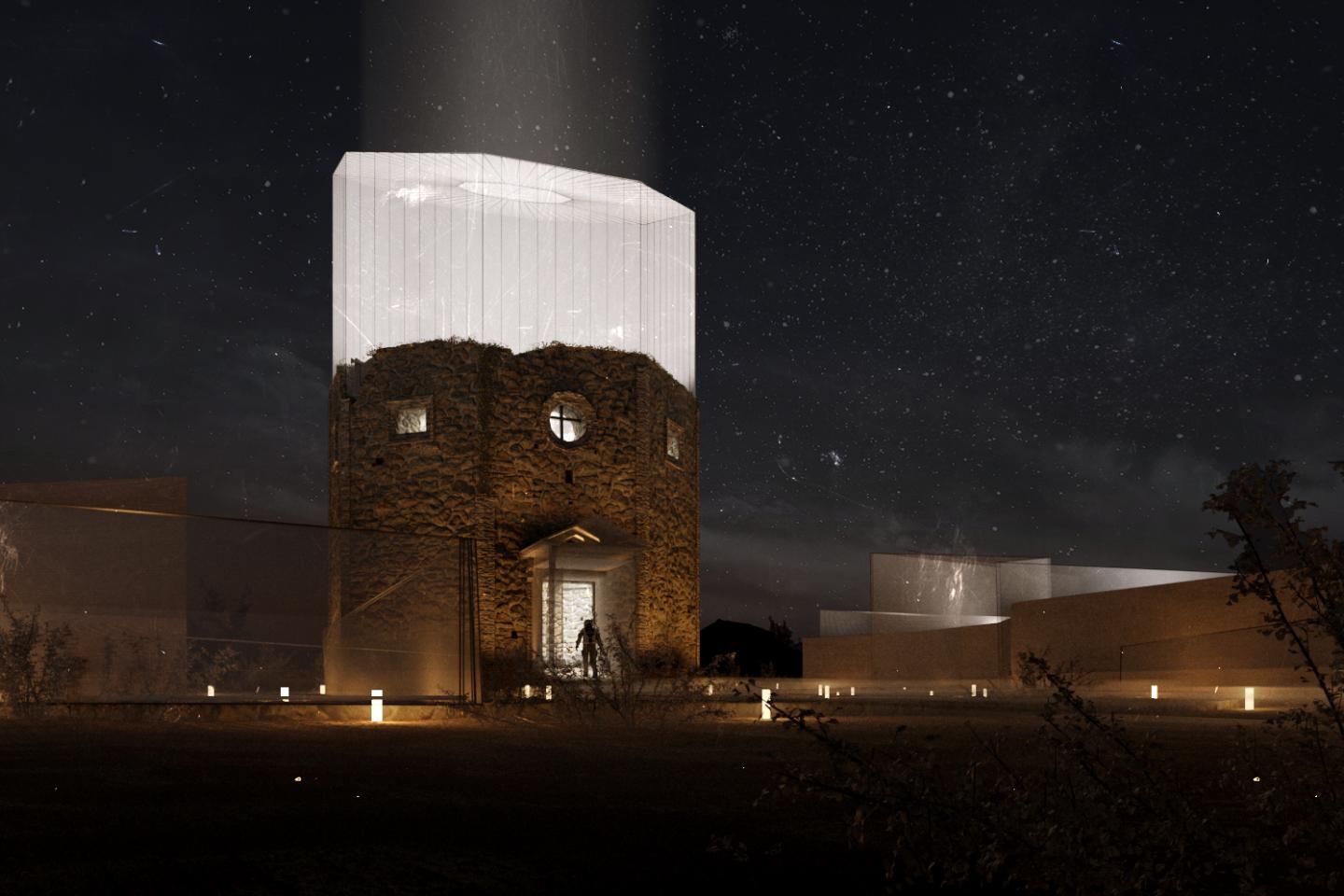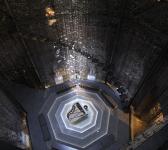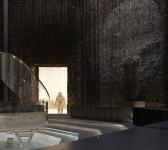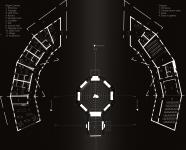Location: Italia, Viterbo, San Lorenzo Nuovo
Is it possible to bring life back inside a late Reinassance church along the Via Francigena path?
The Lake Chapel of San Giovanni in Val di Lago is a small octagonal church, built in the middle of the sixteenth century on the shores of Bolsena lake, on the ruins of an ancient medieval church, along the Via Francigena.
In our project, we tried to keep the spirit of the place, but also bring a new life and function to the small octagonal church. This proposal is a synthesis of modern architecture with the past life, and shows the heritage and evoking new emotions.
Our solution is based on the bipolarity of the process of regeneration "preserving - developing" and "developing - preserving" in which we used an adhocracy approach to the process of regeneration of the historical environment through the artistic contrast of old and new, as a dualism of detail and background, order and chaos.
The main volume on the Chapel has cut cylinder shape to catch more light during the day and exude light with more depth during the night.
The main entrance is made in the module, scale and rhythm of the original Renaissance buildings, but in frosted glass, which is uniting the interior and exterior spaces of the church.
The center of the pilgrims itself creates an annular direction of the procession around the church with a pronounced entrance group along the main road. Such a structure is created by a ray direction from the center of the octagonal church along its faces. The internal structure of the building has a clear division into rooms, as well as side galleries for passage, which also serve as a barrier to the intersection of the environment of housing, recreation and church.
The inner space of the church has a smooth descent to the center of the tower. Inside you can see some art sculptures in the niches and of course listen concerts and prays. Thin threads with teardrop-shaped metal and glass pendants hang from the walls and internal support structures of the tower, framing the entire space, creating the illusion of dissolving in space-time.
Thus, these volumes create the dynamics of space and direct the viewer's gaze to the main element of this symmetrical composition - the Chapel.
2022
2022
The architecture is based on non-visualization and separation of new architecture from the old building. To achieve that, we decided to use frosted glass for the main volume of the chapel, which has a cut cylinder form that is tending upward to dissolve into the sky. Such a composite material will become a faceless texture that will devisualize and dematerialize the superstructure during the day, and at night it will emit a soft glow due to frosted glass and will not only be a place of attraction for pilgrims, but also a transparent screen for events inside. The use of glass expresses a modern interpretation of the new building of local ruins. During the day, the old Italian renaissance architecture “solo”, while the mirror of the new volume makes the visual perception of the old walls sharper and brighter. At night, the abstract background of the "new" space on planar glass becomes the main detail of the architectural ensemble, presenting new scenarios of interaction with space.
The main volume of the building is made of wood of local species, and zigzag parasitic elements contrasting with them are made of frosted glass to ensure the unity of the complex.
Design: Alena Kokueva, Silviya Al Ubed
Visualization: Silviya Al Ubed, Alena Kokueva
Favorited 1 times










